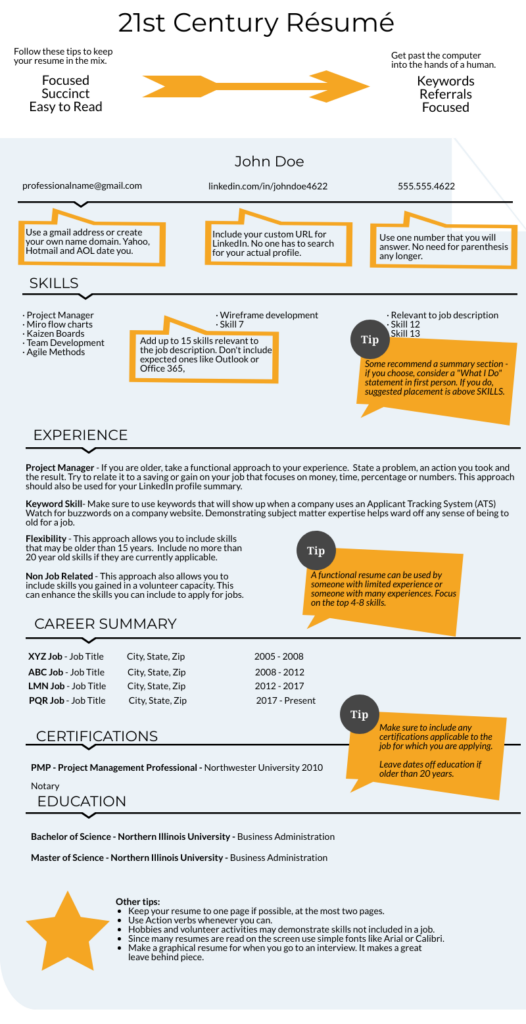What is better a resume vs LinkedIn?
If you are thinking that you only have time to do one thing, what would it be a resume vs LinkedIn? Well I am here to tell you that you can build one and the other will benefit. Read on to find out how. Take a look at the graphic to gain some extra tips.
Keywords
I advocate that keywords are imperative for LinkedIn and nowadays we need them in a resume. So many companies are using Applicant Tracking Systems (ATS) that focus on keywords or phrases prescribed by the job posting that keywords MUST be used in a resume.
Functions
Headlines and summaries on LinkedIn allow you to focus on the functions of your job by employing the keywords I just mentioned. Functions are a great way to build a resume for someone who has tons of experience or very limited actual work experience. When you focus on functions, make sure you tell a story about a problem you faced, an action you took and the result that happened. If you can relate it to savings or a gain in money, time, percentage or number a reader’s interest may pique.
Experience
Using functions allows you to include experience that may have volunteer roots rather than paid experience. Depending upon the type of resume that you build, the listing of job experiences can be a chronological listing or may necessitate including the particular functions of that job right there. On a LinkedIn profile you are forced to include your job experiences in a chronological fashion. If you have gaps in W-2 jobs, try to fill in with “consultant” type work. At the time of this writing, LinkedIn is promoting stay at home experiences because of the explosion of child care and elder care happening these days.
General Tips
- Leave off the address – you really only need an email address, phone number and LinkedIn profile custom URL.
- Skills – bullet list your top 15 skills. If you can complete your list without using things like Microsoft Office (this is expected knowledge for many jobs) or employability skills the better your resume will work in an ATS reader.
- Time – avoid including dates on education or experience older than 15 years. While you can tout subject matter expertise, it could eliminate you from the original pool of applicants.
- Practical and focused – For the initial contact, make sure your resume is focused and succinct. No more than 2 pages. 1 page is better. Leave the artistic resume for the “leave-behind” at the interview. Don’t include an image on the resume you submit initially, the business isn’t supposed to accept it. In this situation, LinkedIn is a must-have. You can have the image; you can add attachments and links; your summary and each work experience can have 350-400 words; you can have as many jobs as you want that are applicable; you can list all of your certifications; you can include 50 keyword skills; and, you can have as many endorsements and recommendations as you can gather.
Summing it up
You need a resume. You probably need a LinkedIn profile. Take advantage of the tremendous amount of information that can be added and edited in LinkedIn to pick the best of the best to use on your resume. Take advantage of the file uploads to put your best generic resume on LinkedIn as a file. Both tools can be fluid. Make sure you aren’t building either one and leaving them out to get stale.
